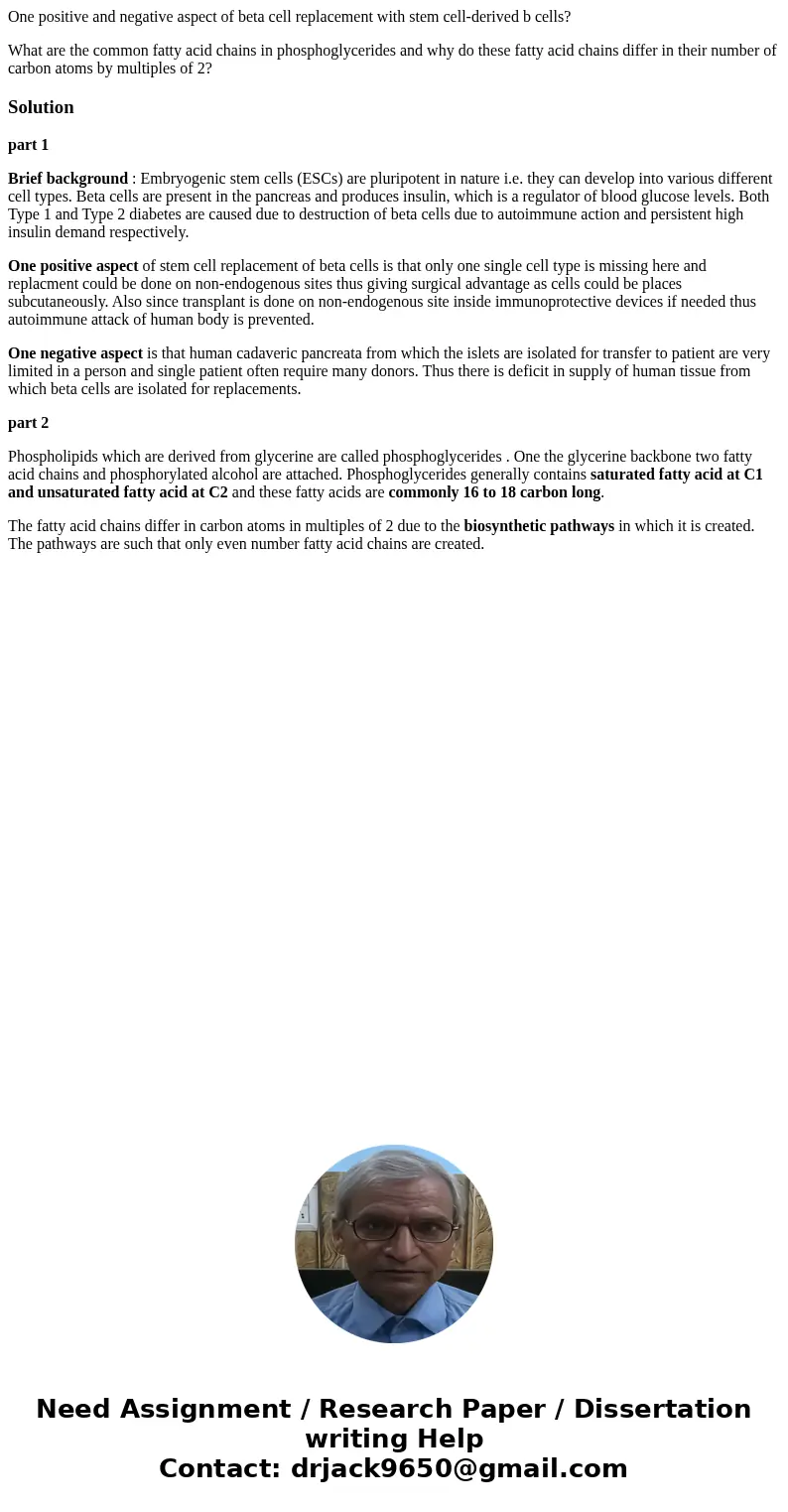One positive and negative aspect of beta cell replacement wi
One positive and negative aspect of beta cell replacement with stem cell-derived b cells?
What are the common fatty acid chains in phosphoglycerides and why do these fatty acid chains differ in their number of carbon atoms by multiples of 2?
Solution
part 1
Brief background : Embryogenic stem cells (ESCs) are pluripotent in nature i.e. they can develop into various different cell types. Beta cells are present in the pancreas and produces insulin, which is a regulator of blood glucose levels. Both Type 1 and Type 2 diabetes are caused due to destruction of beta cells due to autoimmune action and persistent high insulin demand respectively.
One positive aspect of stem cell replacement of beta cells is that only one single cell type is missing here and replacment could be done on non-endogenous sites thus giving surgical advantage as cells could be places subcutaneously. Also since transplant is done on non-endogenous site inside immunoprotective devices if needed thus autoimmune attack of human body is prevented.
One negative aspect is that human cadaveric pancreata from which the islets are isolated for transfer to patient are very limited in a person and single patient often require many donors. Thus there is deficit in supply of human tissue from which beta cells are isolated for replacements.
part 2
Phospholipids which are derived from glycerine are called phosphoglycerides . One the glycerine backbone two fatty acid chains and phosphorylated alcohol are attached. Phosphoglycerides generally contains saturated fatty acid at C1 and unsaturated fatty acid at C2 and these fatty acids are commonly 16 to 18 carbon long.
The fatty acid chains differ in carbon atoms in multiples of 2 due to the biosynthetic pathways in which it is created. The pathways are such that only even number fatty acid chains are created.

 Homework Sourse
Homework Sourse